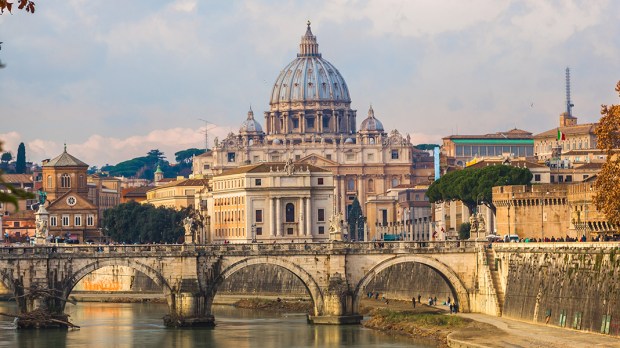Think Michelangelo and St. Peter’s in Rome, and your first thought is the Sistine Chapel, right? The ceiling of that chapel in the Vatican is perhaps Michelangelo’s best-known masterpiece.
But according to author William Wallace, many people forget that St. Peter’s Basilica itself was built under Michelangelo’s direction.
The Florentine artist and sculptor was architect in charge of constructing the new St. Peter’s in the 16th century.
Wallace, author of the new book Michelangelo, God’s Architect, believes that St. Peter’s is Michelangelo’s “greatest achievement.”
“First proposed around 1450 as a replacement for the Early Christian basilica, the new St. Peter’s was reconceived by [Pope] Julius II as a trophy building on a gargantuan scale,” says a review of Wallace’s book in the Telegraph. “When Julius died in 1513, work had barely started. His architect, Donato Bramante, then died too. He was succeeded by Antonio da Sangallo, on whose death in 1546, with crucial elements of the construction still unresolved, Michelangelo was offered the job. ‘I’m not an architect,’ he objected. Pope Paul III disagreed.”
Wallace gives the reader insight into what Michelangelo had on his mind during construction: “Recruiting skilled stonemasons, procuring good rope and sound wood for scaffolding, keeping tabs on crooked suppliers, managing donkeys (the Renaissance equivalent of fork-lift trucks),” the Telegraph says. “The to-do list he imagines keeping Michelangelo awake at night is two pages long.”
Michelangelo was already at an advanced age when he took on the project, and he was racing against time to get it done.
“Knowing he won’t live to see the great dome he designed rise over St. Peter’s, and that, given half a chance, rival architects will posthumously tamper with his work, Michelangelo propels the project forwards until he has built ‘enough to ensure the continuation of his design’—the building that still crowns the Roman skyline,” the article concludes. “He has, after all, been practicing his parting shots for almost 20 years. ‘No one,’ he wrote, ‘has full mastery before reaching the end of his art and his life.’”

